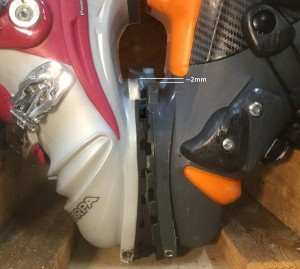
Crispi sz small NTN sole is approx 2mm shorter than Scarpa TX (same mondo size – 26) Photo by SkinnyG.
It appears there is a problem with NTN boots from Crispi; not all, but enough to give a warning. The second heel might be too small, meaning the distance from the toe-to-the-duckbutt is too short. The result is a loose, or unreliable connection with Meidjo and Outlaw bindings. At this moment there isn’t any reliable data on how widespread this issue is, but the nature of the problem is clear, out of spec boots from Crispi. While the problem has been noted by both 22 Designs and The M Equipment, apparently new Meidjo v2.1 springbox is slightly different than v2.0 and more prone to exhibiting the mismatch.
Keep making backcountry turns

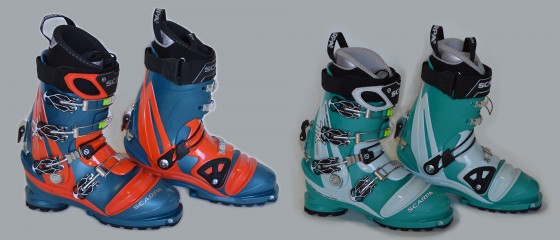
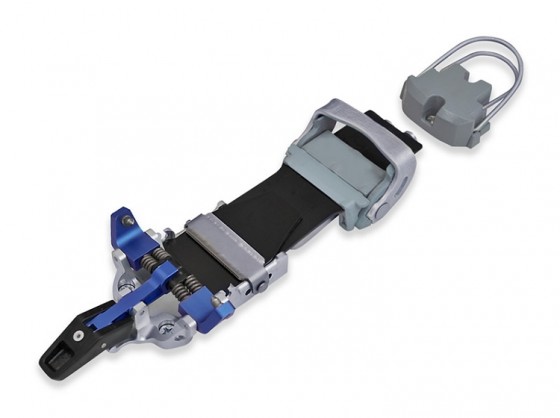
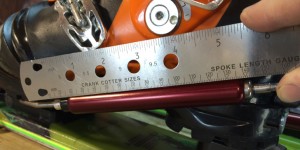
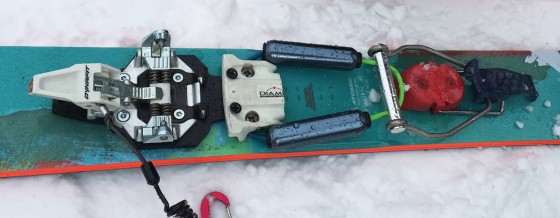
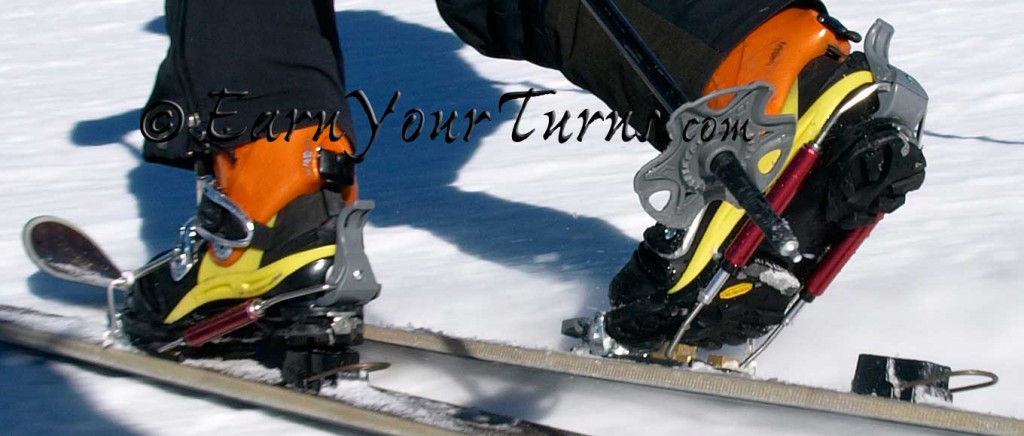
Recent Comments